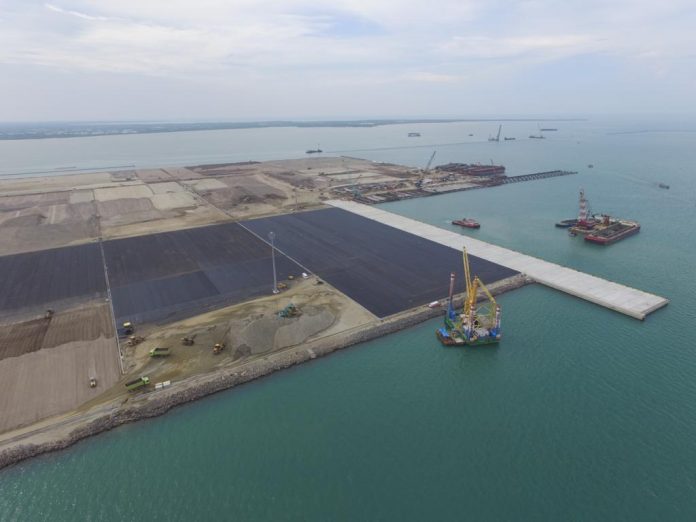The management of Patimban Port in Subang, West Java, Indonesia, began a new chapter on 16 December when Japanese trading group Toyota Tsusho Corporation joined an Indonesian state-owned entity, PT Pelabuhan Patimban Internasional (PPI), in managing the port.
Indonesia’s Ministry of Transport formally handed over management of Patimban to the PPI-Toyota Tsusho consortium that day.
Patimban’s first phase, which equips it with 3.5 million TEU of annual capacity, was completed in 2020.
The port was conceptualised in 2015 as part of the government’s plan to ease congestion in Jakarta’s Tanjung Priuk port, which remains Indonesia’s largest container port. Originally, the government thought of building the port in Cilamaya, but the location was too close to Pertamina’s oil and gas field.
The PPI-Toyota Tsusho consortium is a public-private partnership aimed at reducing the state’s burden, and is an asset management model that has been followed in South Korea as well.
The port is being built by a consortium of five companies from Japan and Indonesia: Japan’s Penta-Ocean Construction, TOA Corporation, Rinkai Nissan Construction and Indonesian state-owned construction companies PT Wijaya Karya and PT Pembangunan Perumahan.
Constructing the port is expected to cost US$3.29 billion, and the Indonesian government had received a loan from Japan International Cooperation Agency to finance the project.
The second stage of Patimban’s expansion will see its capacity increase to 5.5 million TEU and by 2027, when the final stage is completed, the port can handle 7.5 million TEU annually, putting it almost on par with Tanjung Priok, which has a yearly capacity of 8 million TEU.
Arif Toha, deputy director of the Ministry of Transport’s shipping bureau, said that Indonesia’s multi-island structure makes the country’s logistics costs high, compared with other countries. He said that it is hoped that Patimban will help to make the country’s logistics network more efficient.
Martina Li
Asia Correspondent







